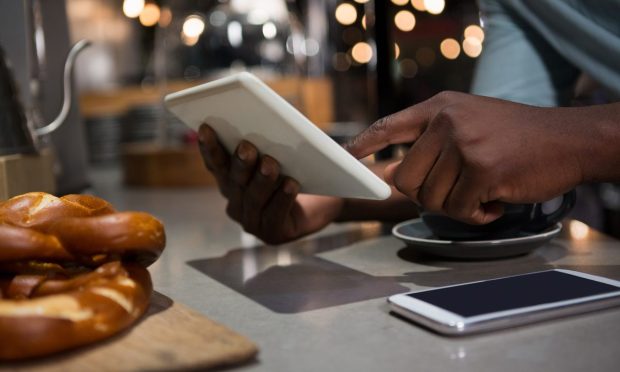Restaurants’ Financial Results Reveal In-Store Technologies Separate Top Performers from the Rest

With consumers having returned to restaurants for in-store ordering and/or on-premises dining, brands seeing the greatest success are those that have invested in onsite restaurant technologies, bringing the digital shift into their stores. Consumers, having grown accustomed to eCommerce speed and convenience, are increasingly coming to expect these digital integrations.
Shake Shack, a New York-based burger chain that operates more than 300 locations across more than a dozen countries, announced Thursday (Nov. 4) that its same-store sales rose 25% year over year in the quarter ended Sept. 29. On a call with analysts, CFO Katherine Fogertey shared the digital tools transforming the in-restaurant experience.
“We’re … going to invest more next year in building our partner in-Shack digital ecosystem,” she said. “From drive-thru menu boards, to pick up screens and enhancing our in-Shack kiosks, investing in digital remains critical, and we aim to continually build on this by developing an improved level of access, convenience and connection with a strong priority on welcoming more guests into our own channels.”
She noted that, in restaurants that already have kiosks, the combination of kiosk ordering and own-device ordering accounts for more than 75% of sales, well above the brand’s overall digital sales mix of 42%.
Similarly, Dine Brands, parent company of Applebee’s and IHOP, saw the benefits of investing in on-premises technology, an even more necessary move for a company whose brands are primarily reliant on dine-in sales. Applebee’s domestic comparable sales were up 36% year over year for the three months ended Sept. 30, and IHOP’s soared 59%, per a company release issued Thursday.
“Our dine-in business is … bolstered by relevant investments in QR code menus, Pay & Go mobile payment and handheld server tablets, making it easier for our guests and our team members as we expand these initiatives in 2022,” Applebee’s President John Cywinski told analysts.
Additionally, Dine Brands CEO John Peyton noted that these digital upgrades are part of the company’s overall push to modernize its technologies across the two brands.
“Our strategy is to build one common digital architecture for both brands that enables us to do more than either brand could invest on its own,” he said. “We remain on track to have approximately 75% of our digital technology tools modernized or new by the end of the year.”
Conversely, Brinker International, which has been less focused on its digital offerings, saw more modest sales growth. The Chili’s and Maggiano’s parent saw comparable restaurant sales growth of 17% year over year for the quarter ended Sept. 29. While the company has two virtual brands, executives did not speak to any of the company’s digital plans going forward nor indicate any intentions to upgrade technologies within its restaurants.
Digital has become the norm. PYMNTS’ The Bring-It-To-Me Economy: How Online Marketplaces And Aggregators Drive Omnichannel Commerce, created in collaboration with Carat from Fiserv, featured a survey of more than 5,200 U.S. consumers about their preferences in dining and food shopping and found 58% of consumers are ordering food online more often than before March 2020.
Read more: QSRs’ Lagging Loyalty-Reward Investment Hurts Innovation And Sales
Consequently, consumers expect digital options. According to data from PYMNTS’ 2021 Restaurant Readiness Index, created in collaboration with Paytronix, about half of all restaurant customers believe that the ability to pay online, the ability to order online and the availability of loyalty programs will be important to restaurants’ future success.
See also: Bring-It-To-Me Economy Ascends As Consumers Embrace Home-Centric Lifestyles
